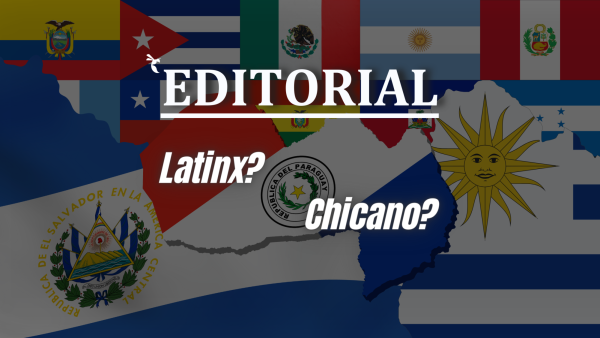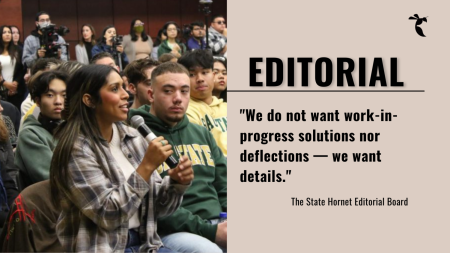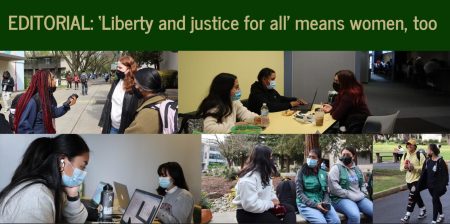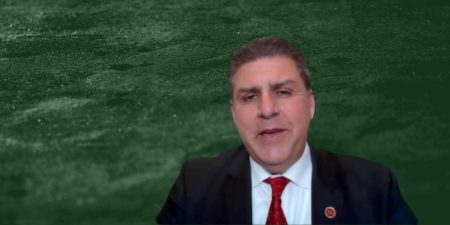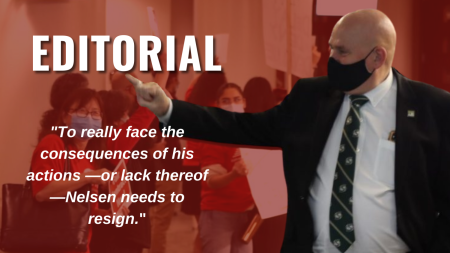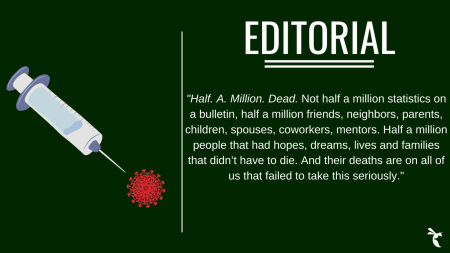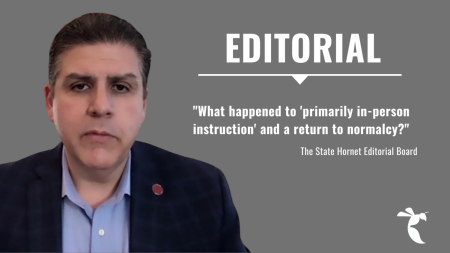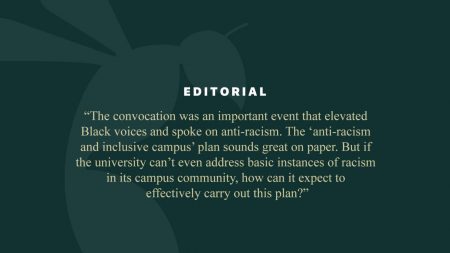First Amendment rights discussed after President Gonzalez censors art student’s work
February 19, 2014
Confusion and discomfort remain on how society intends to blur racial and ethnic diversities, when a long-standing effort was committed to separate and keep groups apart.
This is why graduating senior Christina Edwards’ display of reverse-racism last December was both compelling and insightful.
Edwards, an art student who received clearance from her department and Facilities Services to create the exhibit, coordinated for two white male students to be suspended from a tree “with ropes and harnesses (that) remained visual at all times to ensure the safety of the volunteers.”
Edwards intended to capture a live version of her opinion on the lack of racial and social equality, even in today’s world, and hoped to initiate compassion and empathy for the issue.
Instead, the university condemned the act.
President Alexander Gonzalez sent a memorandum to the campus community, stating the university did not approve of the display and will work with appropriate stakeholders to address the multiple issues raised by the incident, including race, freedom of speech and artistic expression.
Under the First Amendment, free speech allows someone to communicate their ideas and opinions openly with the limitations of libel, slander, obscenity and ethnic hatred. Edwards’ exhibit did not present any of that.
Rather than take the opportunity to at least acknowledge the significance of African-American mistreatment across history, Gonzalez tailored his cautious response into political rhetoric. The display raises awareness to several important issues, including cultural sensitivity, but it is also intelligent and creative in its approach.
White supremacy, especially during the 19th century, dominated United States history and remains a significant aspect in today’s conversations on equality, opportunity and injustice.
Edwards was simply bringing awareness to a social issue, which she felt has not changed enough despite advances in local, state and federal law. It remains a problem and struggle in the lives of African-Americans and she aimed to draw compassion from other races.
Edwards wanted white students to identify with their race, to both tear down the walls surrounding racial tension and blur the lines between racial identity.
While Gonzalez said he encourages thoughtful discussions on race and artistic expression, the visual act of Caucasian lynching is inherently more powerful than actual words. No one can revisit the past and fully understand the struggles of African-Americans, and no one can step in another person’s shoes and sense their strife.































































































































